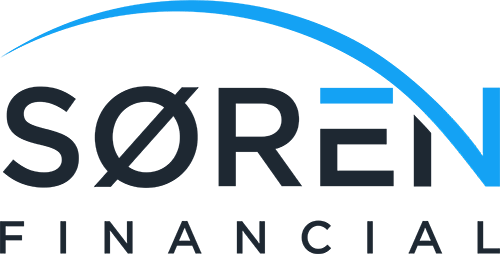Understanding Investment Property Loans: Insights and Tips
Introduction:
If you are looking to learn more about the fascinated by the world of real estate investment, then lets dive into the nitty-gritty of investment property loans and explore how they can help you grow a real estate portfolio.
How Does an Investment Property Loan Work?
So, an investment property loan works a lot like any other mortgage. You borrow money to buy a property, and then you pay back the loan with interest over a set period (usually around 30 years). The property you purchase serves as collateral for the loan until you’ve paid it off.
Key Factors in an Investment Loan Approval
When you apply for an investment property loan, lenders will look at several factors, including:
- Income, Savings, and Expenses: They want to make sure you can service the loan repayments.
- Loan-to-Value Ratio (LVR): This is the loan amount compared to the property’s value.
- Deposit or Equity: How much money you’re putting down initially and the equity you will start off with.
The big difference here is that lenders will also consider the expected rental income from your investment property, along with costs like maintenance and insurance, to gauge your ability to repay the loan.

Comparing Investment Loan Rates
Current Variable Interest Rates
Here’s a quick look at the variable interest rates from Australia’s big four banks as of March 2024:
- Commonwealth Bank: 6.60% p.a. (Comparison rate: 6.97% p.a.)
- Westpac: 6.84% p.a. (Comparison rate: 7.16% p.a.)
- NAB: 7.36% p.a. (Comparison rate: 7.41% p.a.)
- ANZ: 7.84% p.a. (Comparison rate: 7.84% p.a.)
“If you are working with a great mortgage broker, they can run pricing on your interest rate quote, what this means is that they can potentially get you a discount off the rate that is being quoted to the public” – Mansour Soltani
Remember, the comparison rate gives you a more complete picture of the loan cost, including fees and charges, not just the interest rate.

Types of Investment Property Loans
Variable Rate vs. Fixed Rate Investment Loans
- Variable Rate Investment Loan: The interest rate can go up or down with the market based on the RBA and what banks are wanting to pass onto the consumer. This means your repayments might be lower when rates drop but could be higher if they go up. These loans often come with features like unlimited additional repayments and offset accounts which you can use to minimise your interest.
- Fixed Rate Investment Loan: The interest rate stays the same for a set period, usually one to five years. Your repayments are stable, which can be comforting if you’re worried about rate hikes. After the fixed term, the loan usually reverts to a variable rate. Your mortgage broker might even be able to find you a lender that allows a fixed rate with an offset. Contact us at startnow@sorenfinancial.com
- Split Loans: This is a mix of both variable and fixed rates, giving you some stability with the fixed portion and flexibility with the variable portion. You can decide the split, like 50/50 or 70/30, depending on your needs.
Principal & Interest vs. Interest-Only Investment Loans
Benefits of Each Loan Type
- Principal & Interest Investment Loan: Your repayments cover both the principal and interest part of the loan, which means higher regular repayments, but less interest paid over the loan term.
- Interest-Only Investment Loan: You only pay the interest for a set period, usually up to five years. This keeps your repayments lower initially, but you’ll have higher repayments later when you start paying down the principal. This also extends your loan term by however long your interest only period is.

Why Choose Interest-Only Loans?
Cash Flow Management
Interest-only loans are popular among investors because they free up cash flow for other investments. They’re particularly useful for:
- Maximising Tax Deductions: Interest payments are typically tax-deductible.
- Capital Growth: The property can appreciate, which you can leverage to refinance or buy more properties.
Tax Implications
- Tax Deductibility: The interest on these loans is usually tax-deductible, reducing your taxable income.
- Long-Term Planning: While these loans help with cash flow initially, they can impact your long-term financial health if not managed properly.
Tax Implications: Offset Account vs. Redraw Facility
Offset Account
An offset account is a separate transaction account linked to your loan. The balance reduces the amount of interest you pay. It’s great because it doesn’t affect your tax deductions but saves you money on interest.
Redraw Facility
A redraw facility lets you withdraw extra repayments you’ve made on your loan. However, using these funds for non-investment purposes can complicate tax deductions. It’s best to talk to an accountant to understand the tax implications.
How to Compare Investment Property Loans
Importance of a Mortgage Broker
A good mortgage broker can be a game-changer. They can:
- Assess Various Loan Options: Tailor recommendations to your investment strategy and financial needs.
- Recommend Loan Structures: Help you decide between interest-only loans, variable rates, and more.
Establishing a Benchmark Interest Rate
Identify the lowest available interest rates for your LVR and circumstances. If the best rate is around 6.50% p.a., anything higher might not be competitive.
Considering Interest Rates vs. Comparison Rates
Always look at both the interest rate and the comparison rate to get a full picture of the loan’s cost.
Essential Loan Features to Look For
Seek out loans with:
- Offset Accounts
- Redraw Facilities
- Flexible Repayment Options
These features help you manage your loan efficiently and reduce interest costs.
Application Process for Investment Property Loans
Steps from Application to Settlement
- Online Application: Start your application through the lender’s website or a mortgage broker.
- Borrowing Capacity Assessment: Provide your financial details, deposit amount, and property type.
- Documentation Submission: Submit income documents like payslips and tax returns.
- Serviceability and Credit Check: The lender checks your creditworthiness.
- Pre-Approval: If you meet requirements, you receive pre-approval for a loan amount.
- Property Valuation: Once you make an offer, the lender orders a valuation.
- Unconditional Approval: Final approval is granted, and loan funds are released, secured by your investment property.
Investor Tips for Choosing an Investment Property
Data Analysis and Budgeting
- Research the Market: Look at median rents, vacancy rates, and additional costs like strata fees and maintenance.
- Budgeting: Treat your investment property like a business. Ensure that numbers drive your purchase decisions, considering all potential costs.
Conclusion
Investment property loans can be a fantastic way to build wealth through real estate. By understanding the different types of loans, their features, and the application process, you can make informed decisions that align with your financial goals. Whether you choose a variable, fixed, or split loan, consider your strategy, long-term objectives, and the property’s potential.
FAQs
- What are the benefits of an interest-only loan?
- Interest-only loans reduce initial repayments, enhancing cash flow, and maximising tax deductions.
- How can I minimise tax liabilities on an investment property loan?
- Utilise interest deductions, offset accounts, and consult with a tax professional to optimise your tax strategy.
- What should I look for in a mortgage broker?
- Choose a broker with experience in investment properties, a good track record, and someone who understands your financial goals and investment strategy.
- Can I switch from a variable to a fixed-rate loan?
- Yes, many lenders allow you to switch from a variable to a fixed-rate loan, but it’s essential to check for any associated fees or conditions.
- What are the risks associated with investment property loans?
- Risks include market fluctuations affecting property values, changes in interest rates, and potential challenges in finding or keeping tenants. It’s crucial to have a solid financial plan and consider these factors when investing.
